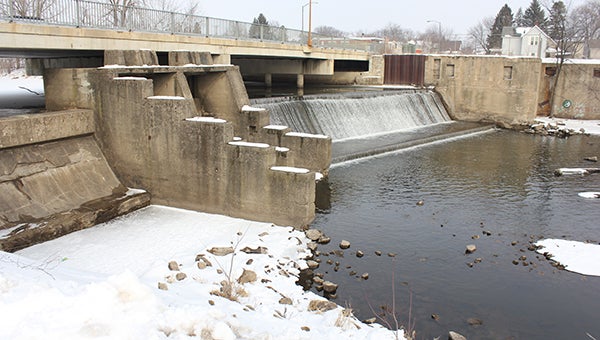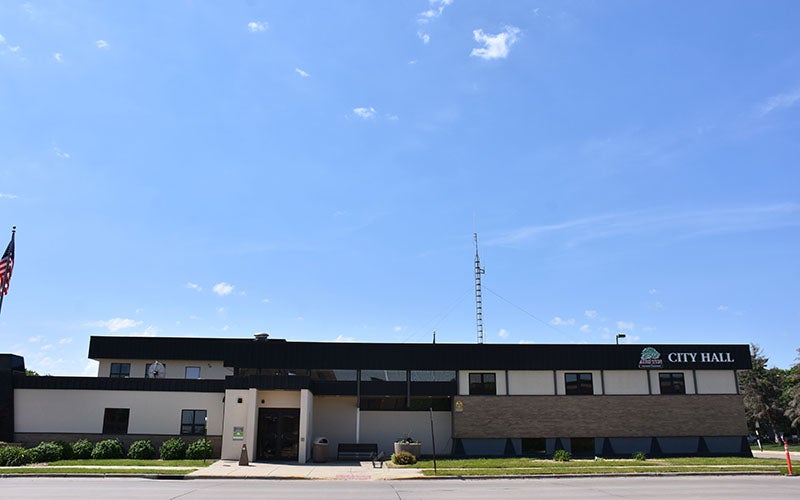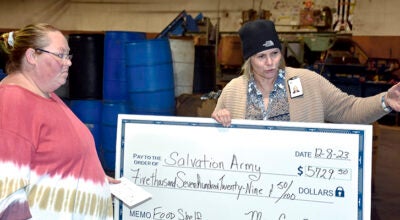Reviving the river: Groups partnering to improve the Cedar
Published 11:30 am Tuesday, February 26, 2013

Community leaders hope to install canoe access points on both sides of the Fourth Avenue dam, along with historical markers and maps. — Matt Peterson/matt.peterson@austindailyherald.com
The Cedar River — as stigmatized as it was and may still be — is a lonely waterway that has become a psychology lesson for Austin.
Sometimes good people just need to see others take action before joining a cause themselves. That’s the newest chapter in a river’s story, a river that people seem to care about more than they have for decades. If local efforts to clean the river, install access points, clear trails, spread information and foster new ideas progress further, perception of the Cedar could drastically change. In some ways, it already has.

The Cedar River Watershed District continues to forge forward on raising awareness about water quality, flood reduction and local waterways as recreational resources. A new website design at cedarriverwd.org highlights local recreational and conservation opportunities with pictures, maps and videos. — Screenshot of cedarriverwd.org
Officials from the city of Austin, Cedar River Watershed District and Department of Natural Resources all met with the Vision 2020 Waterways Committee last Tuesday. All four groups have played roles in improving the Cedar, but last week marked the first time all of them met in one spot. Clearly, the Cedar has friends.
Three years ago, people talked about cleaning the river and making it a recreational resource. They still talk, but now about projects that are actually going to happen.
“I know for sure there will be a Fourth Avenue dam improvement happening in 2013,” said Vision 2020 Director Laura Helle.
What Helle refers to stems from something much earlier. Last year, the Cedar River from Austin to the Iowa border received a state water trail designation by the DNR. Justin Hanson and Tim Ruzek, on behalf of the CRWD, fought for the designation with visions of a cleaner river, trails, signs and more access points for canoes.
“We’re about more than just flood reduction and water quality,” Hanson said about CRWD.
The Cedar received the designation last summer and became the state’s 33rd water trail. Now the DNR is committed to clearing debris and ensuring improvements along the stretch each year.
Officials at Tuesday’s meeting discussed canoe access points on both Mill Pond and below the dam, so canoers can shuttle across land and around the dam.
“I think planning is far enough down the road that it’s a project that’s going to go; that’s a project that’s going to come to fruition,” Hanson said.
Among simple access sites, Helle mentioned building a historical marker where an old mill once stood just south of Fourth Avenue. She added the Mower County Historical Society could use the site to house historical information, along with a map of the bike trail and river.
“Really, all of the [Vision 2020] committees are working on assets that we already have in our community,” Helle said. “We have this waterway; let’s make the most of it.”
Quietly, little pieces of the puzzle are falling in place, sometimes going unnoticed.
For example, CRWD launched a revamped website several months ago. People may not be spending hours surfing its pages, but for a watershed district’s website, it offers unique information. Furthermore, it shows embedded pictures and videos of people enjoying the Cedar, along with resources for people who want to know how they can both help and enjoy the river.
Ruzek said the move is meant to foster more recreation and awareness about the Cedar.
Even though CRWD’s main purpose is flood reduction and water quality, Administrator Bev Nordby said the group is willing to help others’ initiatives. She, like Hanson, understands the opportunity to help.
“We can provide program implementation, dollars, we can partner in financing some of the projects,” Nordby said. “We can also be a partner in providing technical assistance to them.”
More meetings and brainstorming will be needed like they were before, but after years, feet are getting muddy, too.




